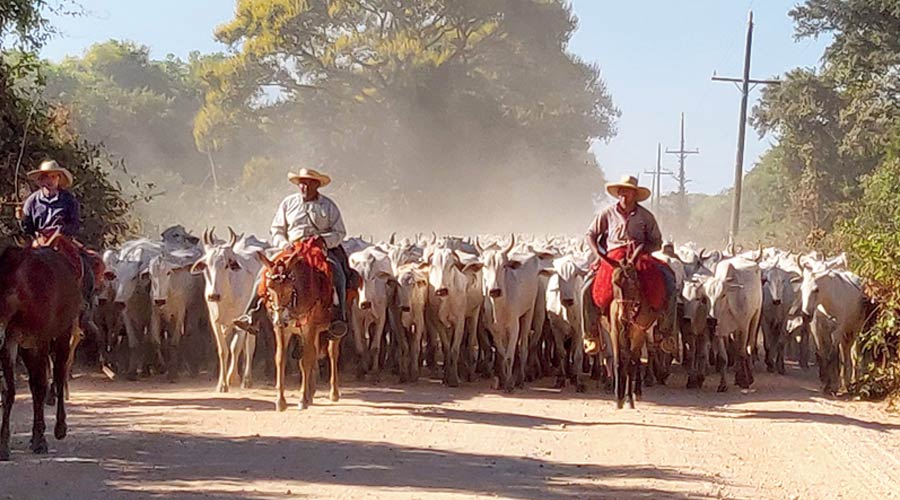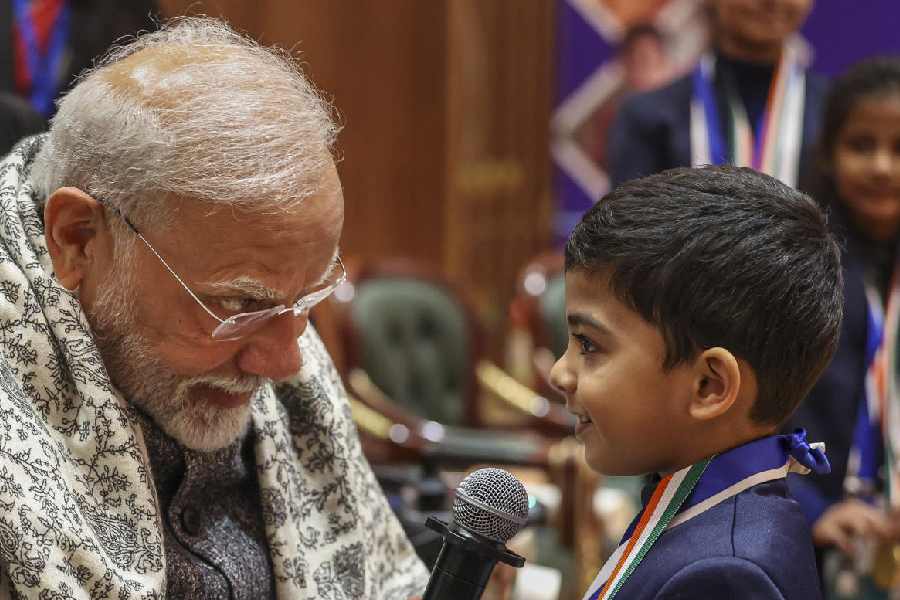Once in four years or so, parts of Calcutta can be mistaken as a neighbourhood of a city in Brazil. The passion for football is a natural connect and very few Bengalis, who are always bitten by the travel bug, do not know about the Amazon. However, beyond the obvious, deciding where to go in Brazil is a difficult task. It is a very large country, about three times the size of India. Do you visit the largest rainforest in the world or the largest wetlands? How do you include the magnificent waterfalls at Foz do lguacu and the pulsating city of Rio in the same itinerary? Should you dive to come face to face with anacondas or try a more sedate experience of piranha fishing?
For wildlife enthusiasts, Brazil offers unique wildlife viewing opportunities and immersive experience in their unique eco-system. The two different options are Amazon rainforests or Pantanal wetlands. Wildlife enthusiasts looking for an exceptional journey in Brazil will undoubtedly come to the same decision crossroads. The Amazon rainforest is the most famous and celebrated wildlife-watching destination in Brazil, but the Pantanal is its best-kept secret. Both these destinations are renowned for boasting wildlife diversity, but each is uniquely different from the other. This means that what one can experience in terms of actually seeing the wildlife is altogether different in these two places.
Pantanal stands out
We chose Pantanal over Amazon for many reasons. The foremost being that spotting wildlife is far easier in Pantanal compared to the Amazon. The ease with which you can see jaguars and the exquisite array of birdlife, scored heavily in favour of Pantanal. Lonely Planet describes Pantanal as the home to some of the world’s most incredible and “cooperative” wildlife. Recommendation from a close friend and our own reading on the Internet helped us to choose Iguacu, a magnificent waterfall, in addition to Pantanal. Niagara and Iguacu are billed as the two greatest waterfalls on the planet.
Pantanal is the largest inland wetland on the planet. The name of the region originates from the word ‘pantano’, which literally translated means ‘swamp’ in both Portuguese and Spanish. It covers more than 210,000sqkm of central Brazil, eastern Bolivia and northeastern Paraguay. Wetlands are places where the land is covered by water, either salt, fresh, or somewhere in between. They cover just over six per cent of the earth’s land surface. Despite their global significance to environment, an estimated one-half of all wetlands on the planet have disappeared.
Amidst the loss, Pantanal stands out. It is one of the most pristine in the world and a tropical paradise for nature and animal lovers. It attracts over one million tourists every year.

Jaguar spotting in Pantanal doesn’t require much luck
The uniqueness of Pantanal comes from the density of some of their inhabitants there and the ease with which you can see them. Jaguars or caimans or capybara or hyacinth macaws or toucans await you as you travel on a boat around the weed-choked streams with your guide. The sheer joy to see some of these remarkable animals on your next river bend is exhilarating.
This region has one of the highest densities of caimans and jaguars in the world. Caimans are similar to crocodiles but belong to different families in the taxonomy. Jaguars closely resemble leopards but again are a different group of animals. They hunt caiman and if one is lucky, one can catch a glimpse of their conflict while travelling on a boat. Given its historical distribution, the jaguar has featured prominently in the mythology of numerous indigenous American cultures, including those of the Maya and Aztec.
One of the biggest attractions for visiting Pantanal is the exotic range of birds one can see from a close distance. The Pantanal is home to the biggest parrot on the planet, the hyacinth macaw. One traveller describes them as ‘too fantastic and too beautiful to be real’.
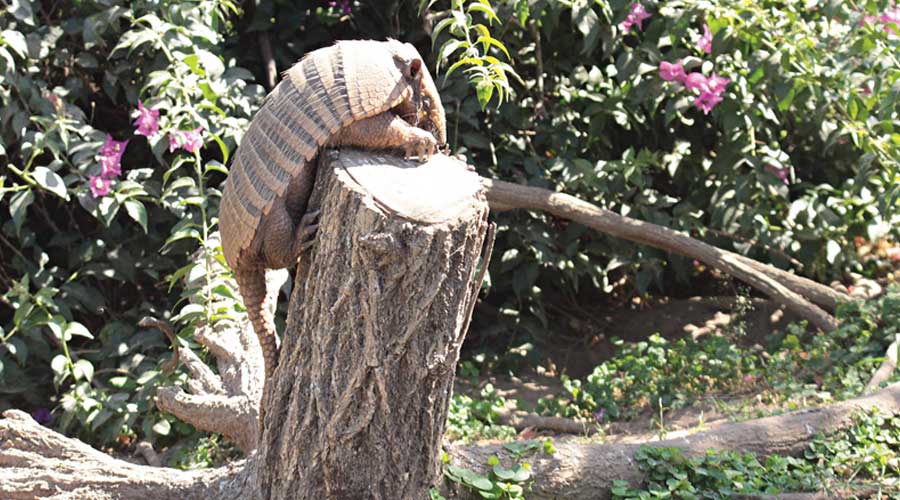
Pet anteater at Pousada Aguape
Where to go
The Brazilian part of Pantanal is divided into two parts, North and South, and lies across two states, Mato Grosso and Mato Grosso do Sul respectively. The North is famous for jaguar spotting and hence probably more valued by travellers who are keen on big cats. South Pantanal is a paradise for bird lovers and giant armadillos are a major attraction in this part.
There are two main access points into the Pantanal — Cuiabá for North Pantanal and we landed here for the first part of our trip after a two-hour flight from Sao Paulo.
There are two main roads running through the Pantanal, the Transpantaneira in the North (Mato Grosso) and Estrada do Parque in the South (Mato Grosso do Sul). Both are dirt roads with numerous wooden bridges in various conditions, as well as hotels (pousadas in Portuguese), and large farms, known as fazendas, catering to tourists. Travelling in Pantanal means long car journeys through dirt roads.
These drives are an experience in itself. You give way to sunbathing caimans and jaywalking capybara and can marvel at flocks of herons stabbing at unwary fish, emerging from under lily pads. The Pantanal’s most charismatic inhabitants hang out here. It is also on these dirt roads you get a feel of rustic Brazil, with cattle herders on horsebacks, herding large numbers of cows across the roads to their ranches. It is in complete contrast to more commonly held images of Brazil with its beaches and raucous nightlife.

A capuchin monkey trying to grab food from macaws
A well-known place to stay for jaguar spotting is Hotel Pantanal Norte in Mato Grosso. It is on Cuiabá River. The hotel is at the end of the Transpantaneira, just by the natural harbour in Porto Joffre. There are two daily boat rides and one has to very unlucky not to spot jaguars during the ride. We took five boat rides during our stay and spotted jaguars on four of our trips. For those who are keen on fishing, piranha fishing is organised by many lodges.
There were many animals and birds which we saw for the first time. Capybara, the world’s largest rodent, was one of them. It is herbivorous and feeds on grasses and aquatic plants. It is the favourite prey of jaguars, caimans, and eagles. Giant armadillos were another strange but shy animal we saw. This strange-looking, furry solitary mammal can effortlessly raid and tear open ant and termite mounds using its large, curved foreclaws. It has poor eyesight, but its sense of smell is exceptional that it uses it for defence, foraging and feeding. The tongue of this wild creature, with tiny hooks called filiform papillae, moves very fast, flicking about 150 times per minute.
After travelling extensively in North, we reached South Pantanal.We took an internal flight from Cuiaba to Aquiduana and travelled by car from there.
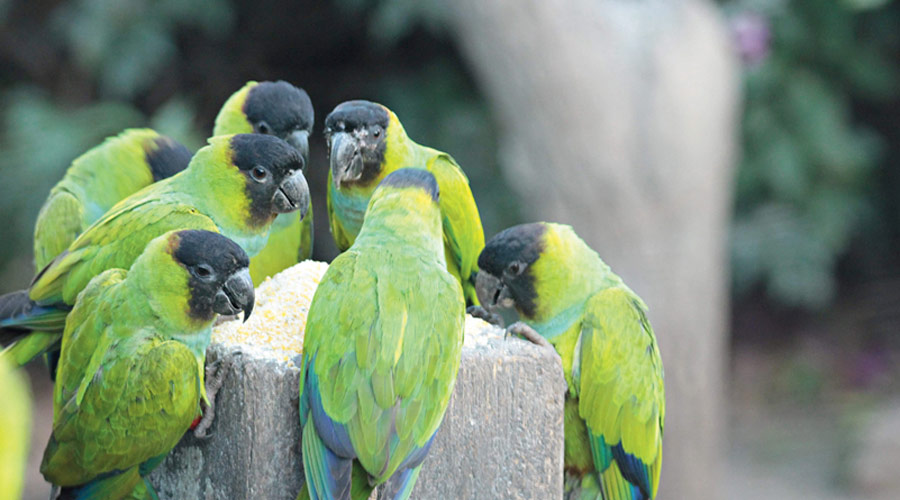
Parrots at breakfast
An unexpected revelation
Southern Pantanal offers an overwhelming array of birdlife to spot, with colourful parrots, toucans and macaws filling the skies and the cacophony created by birds is interspersed with calls from howler monkeys. Pousada Aguape, where we stayed in South Pantanal, took our heart away. There are about 125 different varieties of birds in and around this ranch and we spotted around 50-60 varieties just by hanging around there. Hyacinth macaws are remarkable parrots cloaked in deep indigo plumage with clownish yellow eye patches. It seems both too fantastic and too beautiful to be real.The lodge has pet armadillos and I almost stepped over one while looking for birds in the vegetations. The sheer number of different varieties of macaws and toucans one can see up close is just worth a trip for bird lovers.
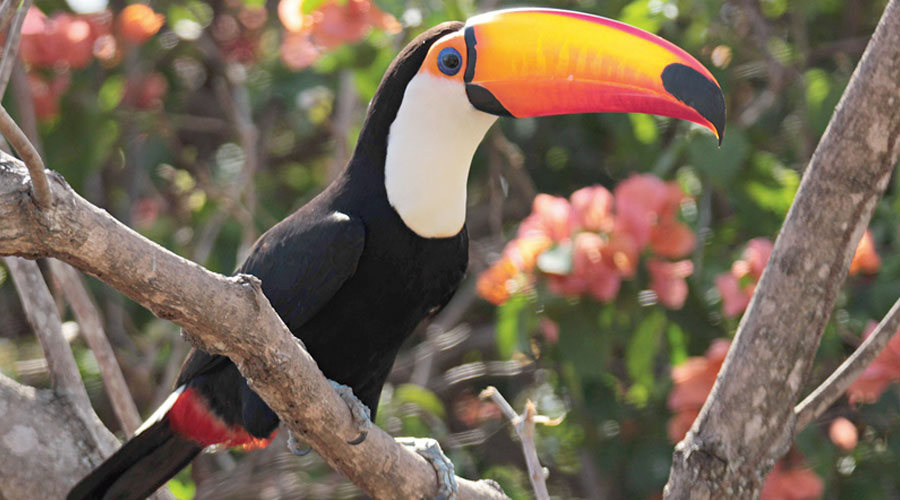
Toco Toucan
One day during breakfast, we overheard a Brazilian tour guide narrating a story that he had accompanied and organised a boat trip in Pantanal to shoot Anacondas. In order to see and photograph these unusual and amazing giant snakes, the photographer scoured the slow-moving waterways of the Pantanal on a boat, and then scuba dived for 20-30 minutes each time he spotted a snake. Apparently, he got world-class shots that befits the status of the photographer. He is none other than a down-to-earth young man from Bengal, Dhritiman Mukherjee.
An unexpected revelation of our trip was a visit to Buraco das Araras, or ‘sinkhole of the macaws’. It is a huge sandstone crater. It is a geological formation resulting from the collapse of boulders creating a cavity of 500m in circumference and 100m deep.
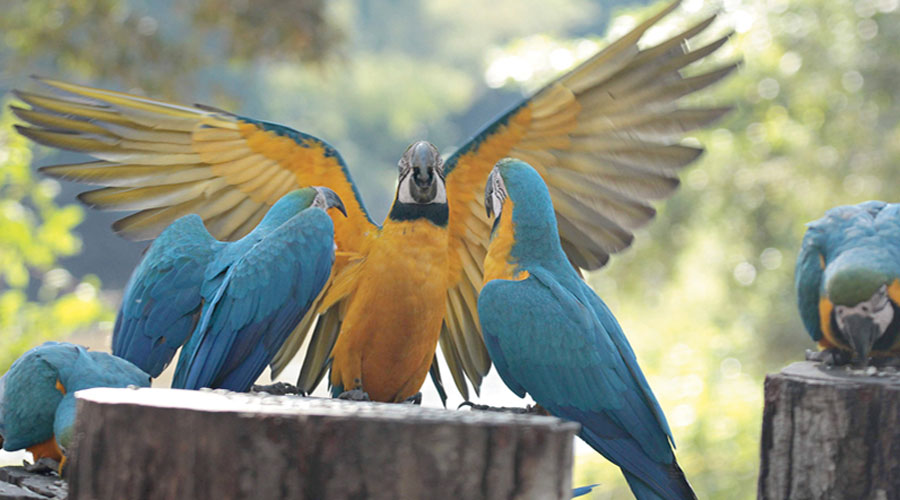
Hyacinth macaws
The story goes that a curious farm hand followed a pair of red and green macaws to the edge of the sinkhole. The landowner was not pleased because he did not want his cattle falling in, so he cut off access by building a road to separate it from the rest of the ranch.
Subsequently, people also used the sinkhole as garbage dump. Trash piled up and worse still, some used it as a shooting range. The macaw numbers dwindled. The sinkhole was cleaned up for about 20 years by the current owner and legend has it that a number of dead bodies were retrieved too.
In 1997, the owner released a pair of red and green macaws in the hope they would encourage others of their species to return. And it worked. Today, Buraco das Araras is home to over 60 pairs of breeding red and green macaws and much more wildlife besides. There are viewing platforms over the crater and beneath it one can see the green moss-covered water.
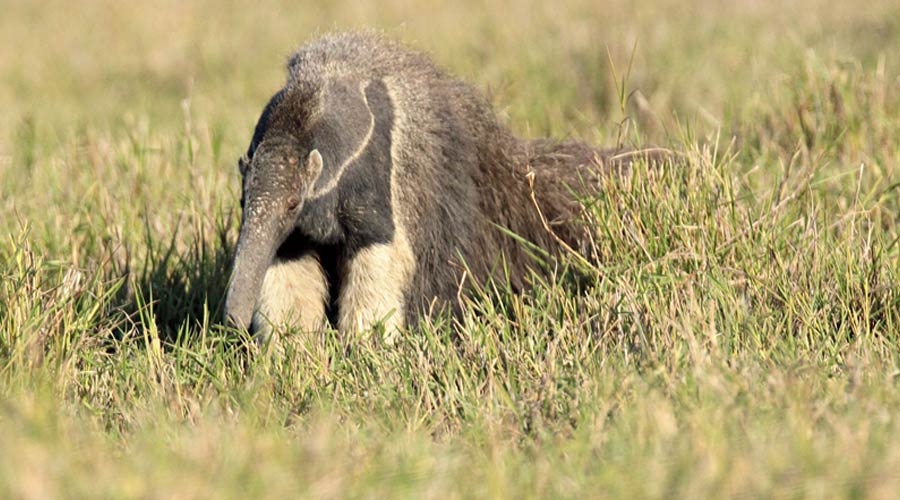
Giant armadillo
Getting a picture of red and green macaws, flying over the moss-covered water, against a backdrop of cratered reddish gray sandstone, is any photographer’s dream. This is also a success story of conservation, transforming a trash pile into a site of immense beauty. The sinkhole and 29 hectares of land surrounding it are protected by Private Reserve of Natural Heritage. The macaws will be safe for years to come.
This was our first trip to Brazil. The expense for travel within the country, food and stays are comparable with that of India. One does not feel that they are paying through one’s nose. For the taste buds, Brazil is a haven for meat lovers with its range of barbequed meats. The most famous cocktail of Brazil, known the world over, are caipirinhas. The fiery kick in caipirinhas is given by fermented sugarcane juice, known as cachaca. So, for the meat and cocktail lovers, Brazil is a comforting place to be. The main language is Portuguese and very few people outside the main tourist areas understand English. It is here, we realised the value of Google translate.
The best time to visit Pantanal is during the dry season, which is roughly from June to September. We travelled in July and can go back again in a heartbeat. There is enough information on the Internet and travel forums on Facebook to equip an independent traveller to plan a visit. The only concern is language but that too was not unsurmountable for us. For wildlife lovers, Pantanal has to be on the bucket list.
Dr Jai Ranjan Ram is a senior consultant psychiatrist and co-founder of Mental Health Foundation (www.mhfkolkata.com). Find him on Facebook @Jai R Ram

